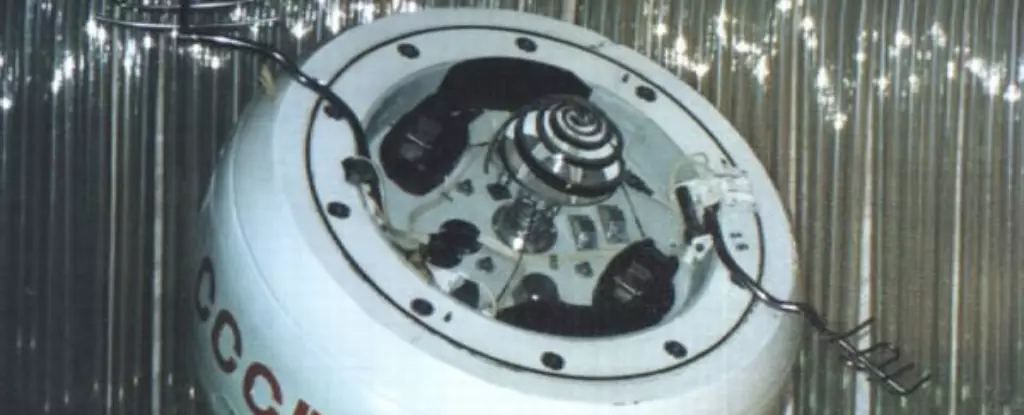Launched during the height of the Cold War, Kosmos-482 stands as a testament to a period where secrecy reigned supreme over space exploration. This Soviet spacecraft, which took to the skies on March 31, 1972, is set to reenter Earth’s atmosphere after an astonishing 51-year odyssey in orbit. It’s remarkable how a relic from an era long past still captures the imagination and curiosity of space enthusiasts and scientists alike. As we prepare to witness this momentous event, one can’t help but reflect on the mission’s historical significance and the broader context of its time.
In the early 1970s, the Soviet Union was deeply invested in both projecting power and achieving scientific milestones. Launched from the Baikonur Cosmodrome, Kosmos-482 was initially intended for a potential mission to Venus, a target of immense interest for both the Soviet and American space programs. However, a timer error stranded the craft in Earth’s orbit, leading to a trajectory defined by anomalies rather than achievements. Such misfortunes were not merely mere technical oversights but rather indicative of a wider culture of secrecy and limited transparency that characterized the Soviet era, encapsulating the spirit of an age when scientific discovery was both a race and a mystery.
The Unraveling of a Mission
The story of Kosmos-482 is not just one of failure but also of resilience in the face of adversity. After its launch, the craft quickly succumbed to a malfunction that resulted in its payload disintegrating shortly thereafter, after which a few pieces fell back to Earth. This outcome echoes the fate of other Soviet missions, such as the infamous Phobos-Grunt, which suffered a similar failure decades later. Such repeated challenges raise the question: what was so daunting about the pursuit of planetary exploration during that era? The answer likely lies in the intricate balance of technical ambition, geopolitical tension, and the ever-looming uncertainties of space travel.
Over the years, features surrounding Kosmos-482 have been shrouded in speculation. While onlookers and amateur astronomers monitored its orbit, the Soviet silence regarding its intended goals and ultimate fate frustrated curious minds. It exemplifies an era where the tension between superpowers often overshadowed transparency in scientific endeavors. These missions, while anchored in the pursuit of knowledge, also served as a stage for geopolitical posturing—creating a rich tapestry of stories that now fuels fascination with space history.
The Impending Reentry: A New Chapter
Now, as Kosmos-482 prepares to make its final journey, anticipation builds around its reentry. With a projected window for reentry around May 10, 2023, much attention will focus on how this aging spacecraft will cross paths with Earth once more. An analyst noted the possibility that the lander could survive the fiery descent, given that it was designed to endure the harsh atmospheric conditions of Venus. However, several variables—ranging from the spacecraft’s age to the specifics of its reentry trajectory—add layers of unpredictability to the spectacle.
The prospect of witnessing heritage items from the early days of spaceflight returning to Earth is captivating; it draws the eyes upward at a time when space has become increasingly crowded with new ventures. From SpaceX’s aggressive deployments of Starlink satellites to China’s burgeoning space initiatives, the trajectory of modern space exploration is at once exhilarating and alarming. The skies are not merely filled with celestial bodies but are becoming a congested arena of technological competition that echoes the tension of the Cold War.
Reflecting on Our Cosmic Heritage
As Kosmos-482 floats towards its finale, the mission serves as a poignant reminder of our shared legacy in space exploration. Each flight, whether triumphant or troubled, contributes to the collective story of human ambition, potential, and the ever-present need for improvement. The convergence of historical context with modern narratives raises essential questions about how we handle the growing burden of space debris, even as we celebrate past achievements.
The impending fiery farewell of Kosmos-482 encourages a reflective examination of how far we’ve come and the lessons learned from earlier endeavors. The history of this spacecraft metaphorically mirrors our own journey as humans navigating an increasingly complex universe, characterized by both wonder and caution. As we witness this relic reconnect with the Earth, it’s not only a moment of observance but a call to action—a need to ensure responsible stewardship of the new frontier where humanity’s aspirations and technology converge. In the backdrop of a crowded cosmos, let us remember: every descent carries the weight of history and a promise for the future.

